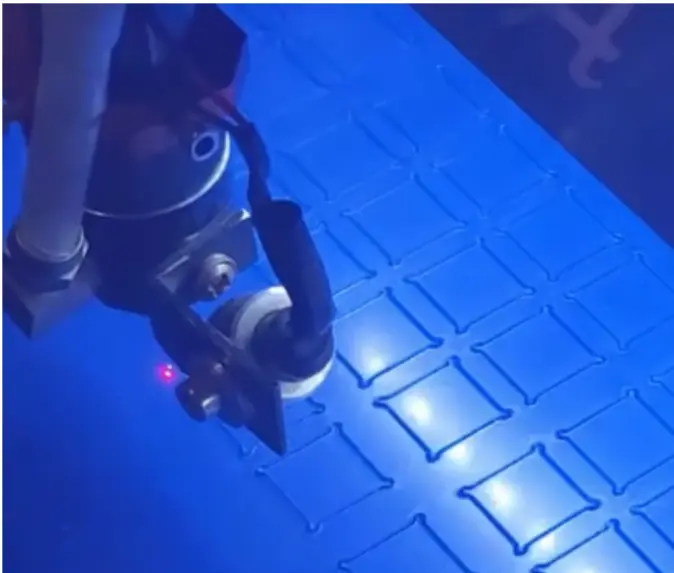What Is Acrylic?
Acrylic is the shortened name for polymethyl methacrylate (PMMA), which is a type of rigid plastic with a great level of transparency—so impressive it’s often used in place of glass. It also happens to be the number-one plastic for laser cutting.
You may see both PMMA and MMA out in the world, and they are related. PMMA is a polymerized version of MMA, which is methyl methacrylate and is a vital part of creating acrylic polymers.

How It’s Made
This synthetic resin is made through polymerization and it’s a breeze to mold it into numerous shapes. The process starts with filling methyl methacrylate into a mold with a catalyst. This causes its structure to form (into long polymer chains) and once this process is finished, the acrylic will be extruded or cast and go through post-processing.
Types of Acrylic
There are two common types of acrylic that you’ll come across when looking for manufacturing materials. Their differences come down to how they’re made, which in turn gives them different characteristics.
- Cast Acrylic: This style comes to life by pouring liquid MMA and PMMA pellets into a vat, and that liquid is then transferred to a mold made of glass sheets. This gets heated up and the acrylic goes through polymerization. Then it cools and you have cast acrylic. It’s known for being a little more expensive, but it’s strong, durable, clear, stable, and has great thermal properties.
- Extruded Acrylic: This other type of acrylic gets created through extrusion. First pellets will be turned into resin, then this will be poured into an extruder that will melt it down and push or extrude the material out where it will cool. This is a more affordable process, and it’s great as a glass substitution because it’s consistent and easy to machine. Although its strength is lower, this actually makes it easier to shape.
Outside of these two types, there are many other grades, colors, and formats of acrylic. Some have special coatings to help them resist fogging, flare, and scratches. Others come in paint form, which can be rolled onto walls, products, and even fingernails and cured with UV light.
Uses and Applications
Acrylic can be used in so many different ways across a vast range of industries. Here are some of the most common applications you’ll find:
- Lights for cars, trucks, and other automotives
- Lenses for eyeglasses
- Signs and displays
- Skylights and windows
- DIY projects
- LCD screens
- Bathtubs, furniture, storage containers, and other home goods
- Acrylic for manicures
- Bulletproof security barriers
- Coatings that remain stable in various conditions
- Medical and dental applications, like hip joint replacements, bone cement, and intraocular lenses
- As an alternative to glass and polycarbonate
What are the advantages of acrylic?
There are a few fantastic advantages of selecting acrylic, including that it’s easy to work with, mold, and fabricate, it’s lighter and stronger than glass, it’s a piece of cake to clean, and it’s much more affordable than glass.
What are the disadvantages of acrylic?
There are also disadvantages of using acrylic, which mainly come down to its poor wear and abrasion resistance and heat resistance. It’s also not great in terms of handling heavy loads and corrosive chemicals, like organic solvents.
Why is acrylic used so often?
Acrylic is a popular choice for manufacturers because it offers the same benefits as glass without the worry of it breaking. It’s shatter-resistant, too, which makes it a better fit for many different applications where shattering could cause serious consequences, like in an implant or airplane window. It’s also a versatile material that’s easy to mold, work, and machine.
Is acrylic plastic or glass?
Acrylic is a type of hard plastic, but it’s easily confused with glass since it’s often used as a replacement for it. This is because acrylic is more affordable, strong, durable, and impact-resistant (and clearer than glass), so it won’t shatter, which can be dangerous at worst and dysfunctional at best.
 Olivia
Published Date: 2025/10/20
Olivia
Published Date: 2025/10/20

